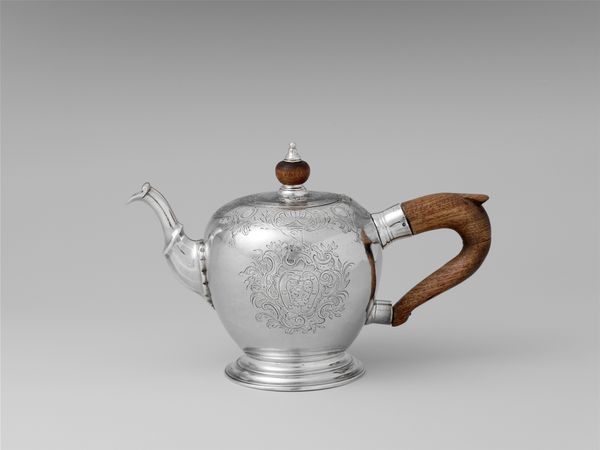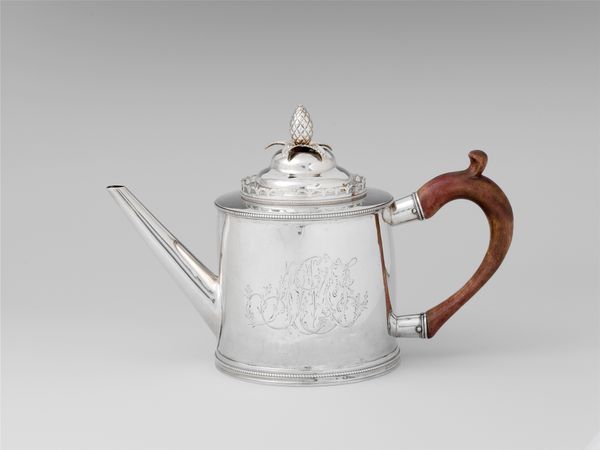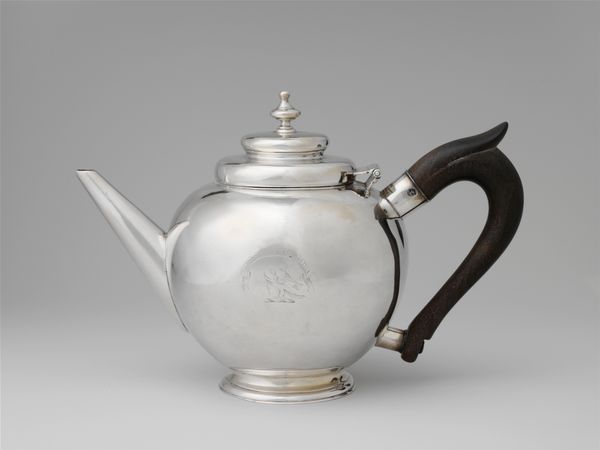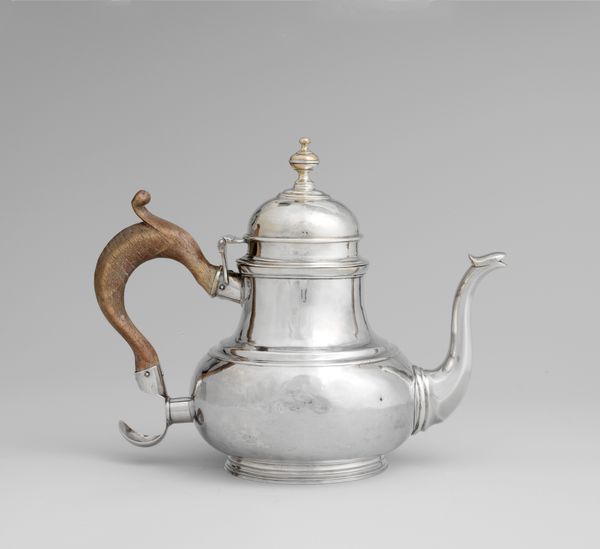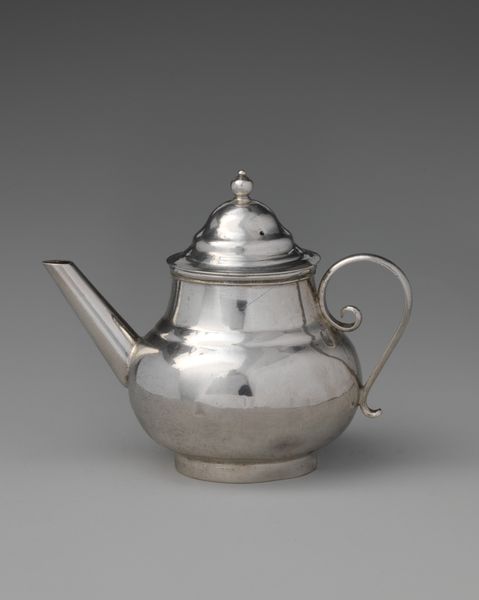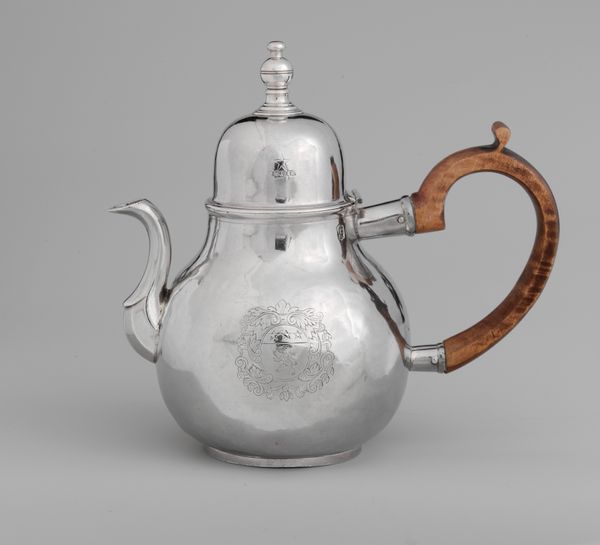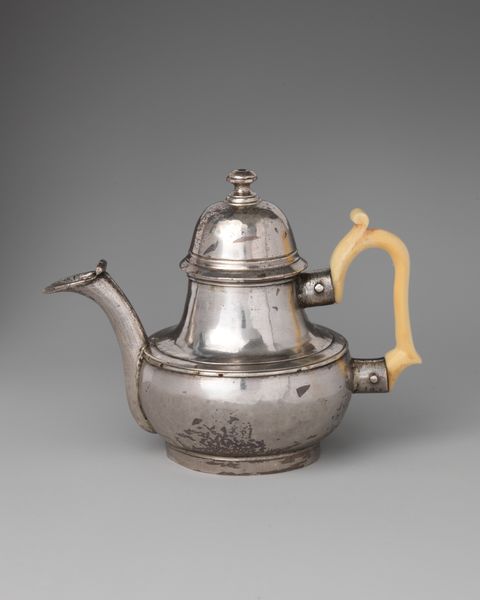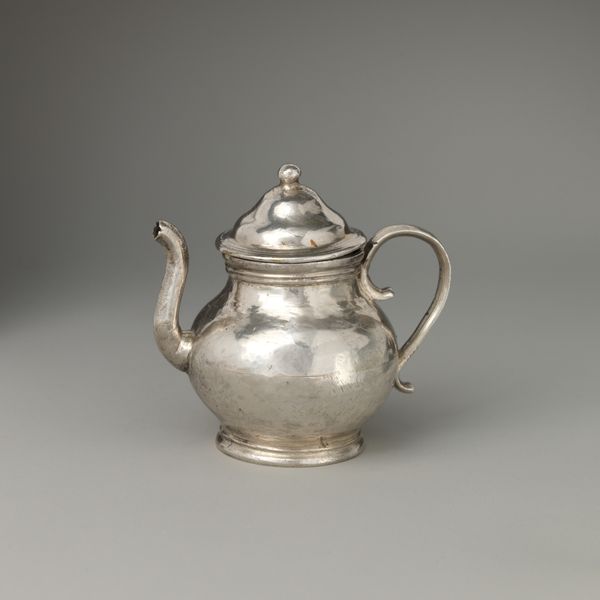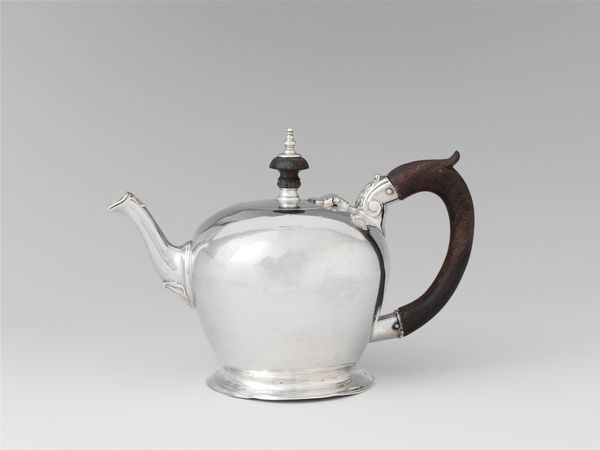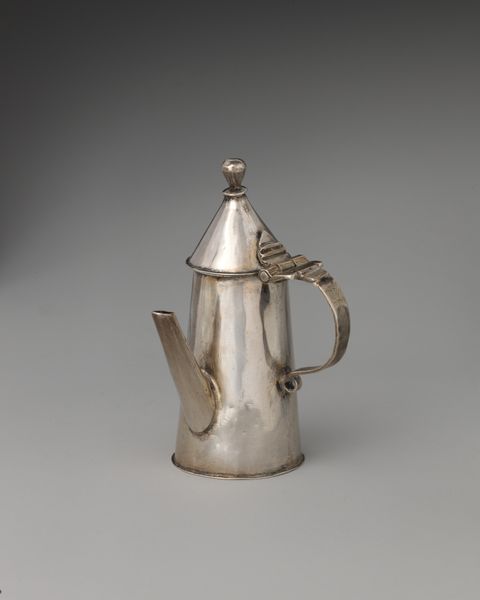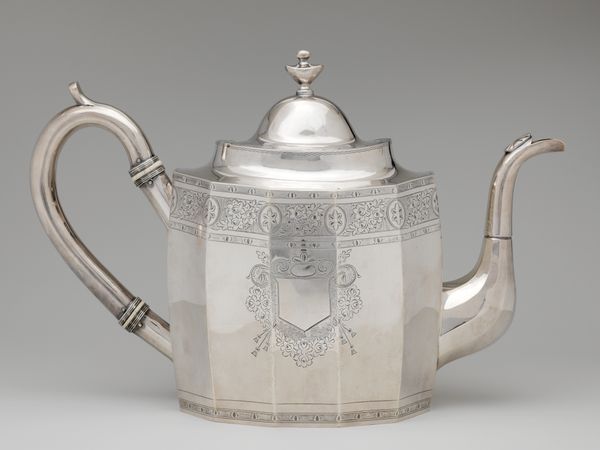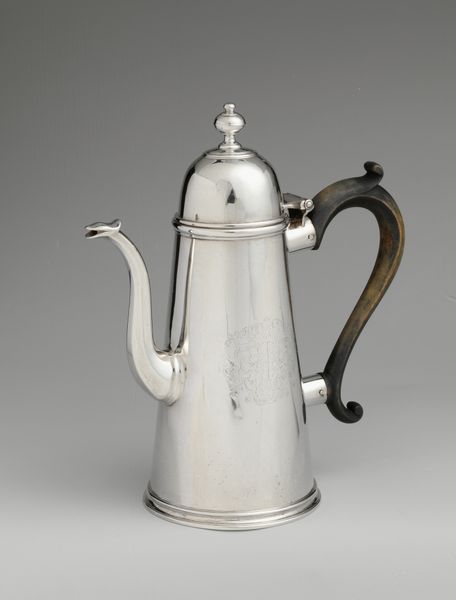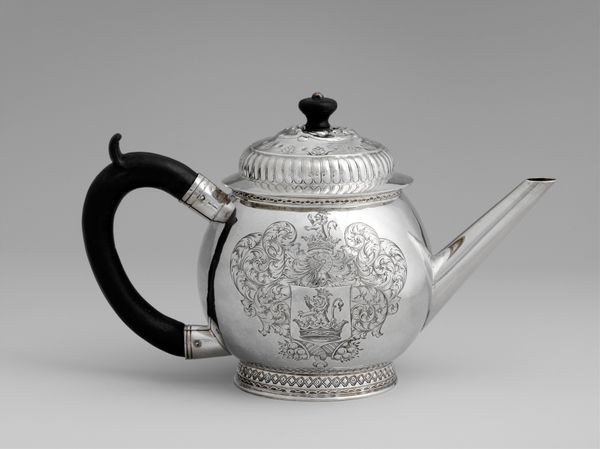
silver, wood
#
silver
#
wood
#
decorative-art
Dimensions: 7 3/16 × 9 5/16 in., 563.5g, 4 7/8 in. (18.3 × 23.7 cm, 18.117 oz., 12.4 cm) Lip diameter: 3 in. (7.6 cm) Diam. of foot: 3 5/16 in. (8.4 cm)
Copyright: Public Domain
Editor: Here we have a "Teapot," crafted sometime between 1715 and 1725, attributed to Peter Van Dyck. It’s primarily made of silver with a wooden handle and is part of the decorative arts collection. It looks quite pristine, like it belongs in a palace! What's the significance of something like a teapot being preserved in a museum? Curator: Well, it tells us a great deal about the society that produced and used it. A silver teapot wasn't just a functional object. It was a statement about wealth, status, and participation in global trade networks. Editor: Global trade networks? How so? Curator: Think about it. Tea itself was an import, often associated with the East India Company. Owning a finely crafted teapot like this one signalled participation in that trade, echoing colonial power structures of the time. Who would have used a teapot like this, and where? Editor: Probably a wealthy family in a colonial city like New York or Philadelphia? Tea ceremonies were about display as much as enjoying a drink, right? Curator: Precisely. And where would they have learned those tea ceremonies? From conduct books and visual guides popular at the time, reflecting very specific social ideals and class aspirations. Its presence in the Met speaks to how museums also reinforce, or challenge, historical power dynamics. Editor: So, a seemingly simple teapot holds layers of meaning about wealth, colonialism, and even the early roots of consumer culture. That gives me a lot to think about. Curator: Indeed. Objects like this are cultural artifacts, embedded with stories about taste, social mobility, and the making of early American identity.
Comments
No comments
Be the first to comment and join the conversation on the ultimate creative platform.
